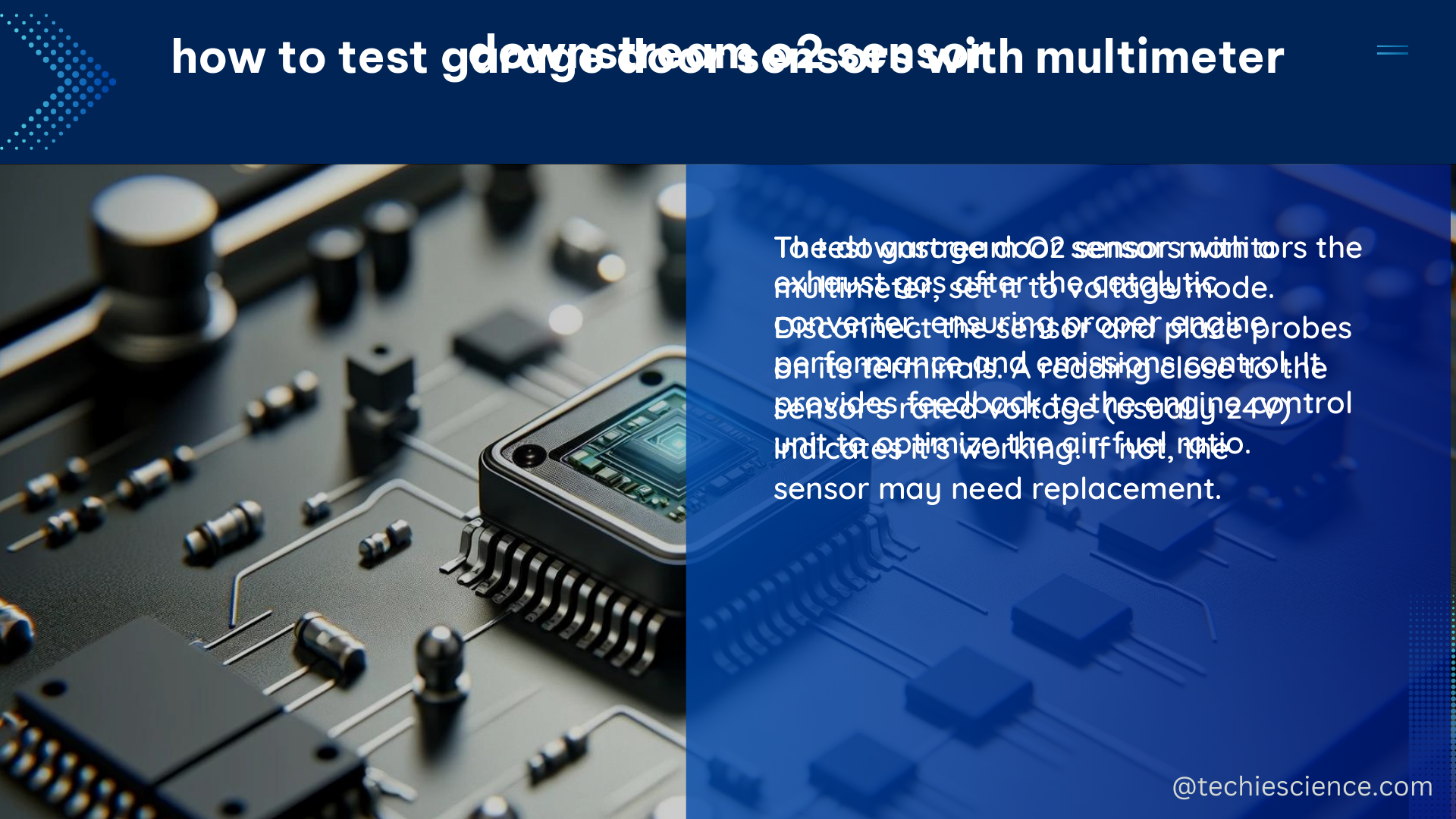The downstream O2 sensor, also known as the post-catalyst sensor, plays a crucial role in monitoring the efficiency of the catalytic converter and ensuring proper air-fuel ratio adjustments in modern vehicles. This comprehensive guide will delve into the technical details and quantifiable aspects of the downstream O2 sensor, providing you with a deep understanding of its function and importance in maintaining a well-tuned exhaust system.
Resistance Range and Operating Temperature
One of the key specifications of the downstream O2 sensor is its resistance range. According to industry standards, the typical resistance range of a downstream O2 sensor is between 5-10 ohms at an operating temperature of 250 degrees Celsius (482 degrees Fahrenheit). This resistance value fluctuates based on the amount of oxygen present in the exhaust gases, which in turn affects the voltage output of the sensor.
It’s important to note that the downstream O2 sensor’s resistance can vary depending on the specific make and model of the vehicle. Some sensors may have a slightly different resistance range, typically within the 5-15 ohm range at the same operating temperature. Regularly checking the sensor’s resistance and ensuring it falls within the manufacturer’s recommended specifications is crucial for proper system operation.
Voltage Output and Frequency

The voltage output of the downstream O2 sensor is another critical aspect to consider. Unlike the upstream O2 sensor, which typically outputs a wide-range voltage signal, the downstream O2 sensor generates a low-current voltage signal on its own, without any external input. This voltage output is directly related to the chemical reactions taking place within the catalytic converter.
The ECU (Engine Control Unit) is programmed to monitor the voltage and frequency of the downstream O2 sensor’s signal, looking for a specific range that indicates the catalytic converter is functioning efficiently. The typical voltage output range for a properly functioning downstream O2 sensor is between 0.1 to 0.9 volts, with a frequency of around 1-2 Hz (Hertz).
It’s worth noting that the voltage output and frequency can vary depending on the specific vehicle’s make, model, and engine configuration. Consulting the manufacturer’s specifications or using a diagnostic tool to measure the sensor’s voltage and frequency is recommended for accurate troubleshooting.
Sensor Location and Exhaust System Considerations
The location of the downstream O2 sensor within the exhaust system can also impact its performance and the overall efficiency of the exhaust system. According to industry experts, downstream oxygen sensor probes can represent significant exhaust blockage and cause exhaust stream turbulence in narrow exhaust pipes.
Repositioning the downstream O2 sensor can potentially increase power by reducing exhaust backpressure and improving exhaust gas flow. This is particularly important in high-performance or modified exhaust systems, where the sensor’s placement can have a noticeable impact on the engine’s power output and overall efficiency.
When considering the sensor’s location, it’s crucial to ensure that the sensor is positioned in a way that allows for accurate readings and minimal interference with the exhaust flow. Consulting the vehicle’s service manual or seeking the advice of a professional technician can help determine the optimal placement of the downstream O2 sensor.
Sensor Heating Element and Efficiency Monitoring
In addition to the resistance range, voltage output, and location, the downstream O2 sensor also features a heating element. This heating element is designed to quickly bring the sensor up to its operating temperature, typically around 250 degrees Celsius (482 degrees Fahrenheit), to ensure accurate and reliable readings.
The sensor’s voltage activity is then mathematically compared with that of the upstream O2 sensor by the ECU. This comparison allows the ECU to monitor the efficiency of the catalytic converter and make necessary adjustments to the air-fuel ratio to maintain optimal emissions and engine performance.
By closely monitoring the downstream O2 sensor’s performance, the ECU can detect any issues with the catalytic converter, such as deterioration or blockage, and trigger a diagnostic trouble code (DTC) to alert the driver or technician of the problem.
Conclusion
The downstream O2 sensor is a critical component in the exhaust system, responsible for monitoring the efficiency of the catalytic converter and ensuring proper air-fuel ratio adjustments. Understanding the technical details and quantifiable aspects of the downstream O2 sensor, such as its resistance range, voltage output, location, and heating element, is essential for diagnosing and repairing any issues related to the exhaust system.
By following the guidelines and recommendations outlined in this comprehensive guide, you can ensure that your vehicle’s downstream O2 sensor is functioning optimally, contributing to improved engine performance, fuel efficiency, and reduced emissions.
References:
- Understanding Oxygen Sensors to Diagnose Fault Codes | MotorTrend
- Potentially increasing power from repositioning downstream oxygen sensor | Club Lexus
- Monitoring Emission Efficiency With O2 Sensors – Brake & Front End
- Snap-on Live Training Episode 19 – Component Testing – YouTube
- Rear O2 sensor trick? – YotaTech Forums

The lambdageeks.com Core SME Team is a group of experienced subject matter experts from diverse scientific and technical fields including Physics, Chemistry, Technology,Electronics & Electrical Engineering, Automotive, Mechanical Engineering. Our team collaborates to create high-quality, well-researched articles on a wide range of science and technology topics for the lambdageeks.com website.
All Our Senior SME are having more than 7 Years of experience in the respective fields . They are either Working Industry Professionals or assocaited With different Universities. Refer Our Authors Page to get to know About our Core SMEs.